Learning to code can feel overwhelming, especially when you’re not sure where to start. With hundreds of programming languages out there, it’s no wonder many people (especially women entering the industry for the first time) feel intimidated by it all.
But here’s the truth: you don’t need to know everything to get started in tech. You just need to pick one language and go from there. The key is choosing a language that’s right for your goals, whether you’re dreaming of building websites, launching apps, or analysing data.
This guide breaks down seven of the most beginner-friendly and in-demand coding languages in 2025, explaining what each one is used for, how easy it is to learn, and where to get started.
What makes a programming language beginner-friendly?
Not all coding languages are created equal; some are easier to read, offer more support and tutorials, or are better suited to certain careers.
Here’s what we looked at:
- Ease of learning: readable syntax, friendly documentation
- Community support: online forums, courses, mentors
- Career potential: demand in the job market
- Versatility: range of uses (e.g., web, data, mobile)
Which coding language should I learn first?
1. Python: best all-rounder for beginners
Why learn Python?
Python is known for its simplicity and readability, making it one of the most popular first languages for beginners. Its versatility means you can use it for a wide range of projects from automating everyday tasks and analysing spreadsheets to building websites and training AI models.
Python is also the primary language in data science and machine learning, making it a great choice if you’re interested in in-demand roles like data analyst, data engineer, or AI specialist.
Beginner tips:
Many new coders worry about understanding abstract concepts like variables and loops. With Python, these are introduced gradually and with lots of visual tutorials available. Don’t skip practicing with small scripts as you’ll build real confidence there.
Learning curve: Very gentle
Used by: Google, NASA, Netflix, Reddit
Great for: Data analysis, automation, AI, back-end development, education
Popular job roles: Data Analyst, Python Developer, ML Engineer
Get started in Python with:

2. JavaScript: for web development and interactive sites
Why learn JavaScript?
JavaScript brings websites to life. Without it, web pages would be static and dull. JavaScript is what powers things like dropdown menus, animations, live chat widgets, and interactive forms.
In 2025, JavaScript remains essential for front-end development, and with frameworks like Node.js, it’s increasingly used on the back-end too, meaning you could build a full website using just JavaScript.
Beginner tips:
JavaScript can feel overwhelming at first because it’s dynamic and a bit more technical than Python. Stick to learning core concepts (like functions and DOM manipulation) before moving to frameworks like React or Vue.
Learning curve: Moderate
Used by: Meta, Google, Shopify, Airbnb
Great for: Web development (front-end and full-stack), UX enhancements, mobile apps (via React Native)
Popular job roles: Front-End Developer, Full-Stack Engineer, Web App Developer
Get started in JavaScript with:
- JavaScript.info
- Codecademy JavaScript Course
3. HTML & CSS: the foundations of web design
Why learn HTML and CSS?
These aren’t programming languages in the traditional sense, but they’re absolutely essential for web development. HTML (HyperText Markup Language) is used to structure content, while CSS (Cascading Style Sheets) controls layout, colours, and fonts.
Together, they give you the tools to build beautiful websites and help you understand how the internet is constructed.
Beginner tips:
Because HTML and CSS are visual, progress is highly satisfying for new learners. Tinker with real websites using free tools like CodePen and inspect pages using browser DevTools to learn by doing.
Learning curve: Easy
Used by: Every website you’ve ever visited
Great for: Website layout and design, marketing pages, UI prototyping
Popular job roles: Web Designer, Junior Developer, Content Manager
Get started in HTML & CSS with:
4. SQL: Best for data lovers
Why learn SQL?
SQL (Structured Query Language) is the language used to talk to databases. Almost every company stores data in databases, and SQL lets you retrieve, filter, and manipulate that data. Whether you’re pulling reports, tracking customer behaviours, or cleaning data for analysis, SQL is your friend.
If you’re interested in data-driven careers or want to understand how companies make data-backed decisions, SQL is a powerful (and surprisingly accessible) skill.
Beginner tips:
Many SQL tutorials use bland datasets, so try practicing with open datasets that interest you (like Spotify listening stats or Netflix titles) to stay motivated and keep it from being too dry.
Learning curve: Easy to moderate
Used by: Financial institutions, ecommerce platforms, tech companies
Great for: Reporting, dashboards, business insights
Popular job roles: Data Analyst, Marketing Analyst, Business Intelligence Developer
Get started in SQL with:

5. Scratch: Perfect for absolute beginners and visual learners
Why learn Scratch?
Scratch is a visual programming language developed by MIT. It’s drag-and-drop based, making it a great entry point for understanding programming concepts like loops, conditionals, and variables without writing code.
It’s designed for children, but don’t let that fool you, plenty of adult beginners use it to get comfortable with logic before tackling written code.
Beginner tips:
Use Scratch to create simple games or animations, it’s a confidence booster and great fun!
Learning curve: Extremely easy
Used by: Schools, beginners, educators
Great for: Visual learning, logical-thinking, early-stage confidence
Popular job roles: N/A (but a fantastic stepping stone to Python or JavaScript)
Getting started with Scratch:
6. Java: Popular for mobile and enterprise apps
Why learn Java?
Java is a well-established, object-oriented programming language and a strong choice for building Android apps and enterprise software. It’s known for its robustness and scalability, so many large systems and financial institutions still rely on Java-based applications.
While it’s not quite as beginner-friendly as Python or JavaScript, it’s widely taught in universities and remains highly employable.
Beginner tips:
Java’s syntax is more complex, so start with guided courses. Focus on understanding “object-oriented programming” (OOP) and writing simple programs like calculators or games to build muscle memory.
Learning curve: Moderate
Used by: LinkedIn, Amazon, Spotify, Android OS
Great for: Android development, enterprise systems, large-scale apps
Popular job roles: Android Developer, Software Engineer, Backend Developer
Get started in Java with:

7. C# (C-Sharp): Ideal for game development
Why learn C#?
If you’re interested in building games or even simulations and AR/VR experiences, C# is your go-to language. It’s the primary language for Unity, one of the most widely-used game engines in the world.
C# is also used in desktop applications and enterprise-level tools, especially in the Microsoft ecosystem.
Beginner tips:
Game development offers instant gratification (you see results quickly), but don’t jump straight into a complex game. Start with Unity’s beginner tutorials and simple 2D projects.
Learning curve: Moderate to steep (depending on what you’re building)
Used by: Unity, Microsoft, gaming studios
Great for: Game design, simulations, desktop tools
Popular job roles: Game Developer, Unity Developer, XR/VR Engineer
Get started in C# with:

How to choose the right coding language
Ask yourself:
- What kind of projects do I want to work on? (websites, data, games?)
- What’s my long-term goal? (a job, freelance, side project, hobby?)
- Do I prefer visual learning or text-based coding?
- How much time can I realistically commit to learning?
Use this article as a starting point – you don’t need to master them all, just pick one, explore and build your confidence.
What are the best resources for learning to code in 2025?
Here are some beginner-friendly platforms trusted by new coders:
Many offer free courses with community support and project-based learning.
Starting your coding journey might feel intimidating but remember, every expert was once a beginner. Choosing your first programming language isn’t about getting it “perfect”, it’s about getting started. The languages we’ve explored above each open the door to different areas of tech, whether that’s building beautiful websites, exploring the power of data, creating innovative apps, or designing your own game.
What matters most is finding the path that excites you, and giving yourself permission to learn, make mistakes, and grow. There’s no one-size-fits-all route into tech, and that’s what makes it such an exciting space to join.
Wherever you are in your journey, just curious or ready to dive in, know that you belong in this industry. And you’re not alone. There are thriving communities ready to support you, courses that break things down clearly, and tools designed to help you succeed.
So choose a language, take that first step, and let your curiosity lead the way. You’ve got this.




